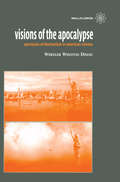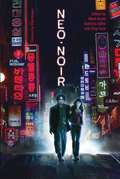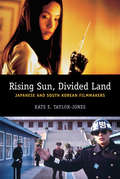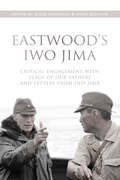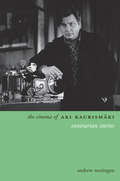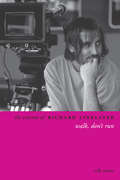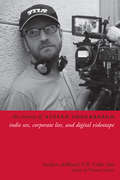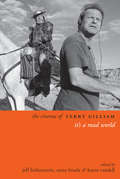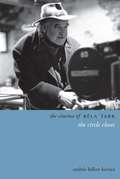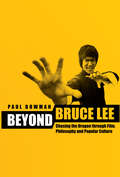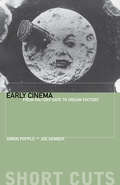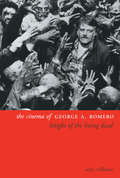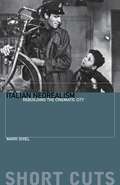- Table View
- List View
Visions of the Apocalypse: Spectacles of Destruction in American Cinema
by Dixon Wheeler WinstonVisions of the Apocalypse examines the cinema's fascination with the prospect of nuclear and/or natural annihilation, as seen in such films as Saving Private Ryan, Bowling for Columbine, We Were Soldiers, Invasion U.S.A., The Last War, Tidal Wave, The Bed Sitting Room, The Last Days of Man on Earth and numerous others. It also considers the ways in which contemporary cinema has become increasingly hyper-conglomerised, leading to films with ever-higher budgets and fewer creative risks. Along the way, the author discusses such topics as the death of film itself, to be replaced by digital video; the political and social tensions that have made these visions of infinite destruction so appealing to the public; and the new wave of Hollywood war films, coupled with escapist comedies, in the post-9/11 era. Encompassing both questions of physical and filmic mortality Visions of the Apocalypse is a meditation on the questions of time, memory and the cinema's seemingly unending appetite for spectacles of destruction.
Visions of the Apocalypse: Spectacles of Destruction in American Cinema
by Dixon Wheeler WinstonVisions of the Apocalypse examines the cinema's fascination with the prospect of nuclear and/or natural annihilation, as seen in such films as Saving Private Ryan, Bowling for Columbine, We Were Soldiers, Invasion U.S.A., The Last War, Tidal Wave, The Bed Sitting Room, The Last Days of Man on Earth and numerous others. It also considers the ways in which contemporary cinema has become increasingly hyper-conglomerised, leading to films with ever-higher budgets and fewer creative risks. Along the way, the author discusses such topics as the death of film itself, to be replaced by digital video; the political and social tensions that have made these visions of infinite destruction so appealing to the public; and the new wave of Hollywood war films, coupled with escapist comedies, in the post-9/11 era. Encompassing both questions of physical and filmic mortality Visions of the Apocalypse is a meditation on the questions of time, memory and the cinema's seemingly unending appetite for spectacles of destruction.
Visions of the Apocalypse: Spectacles of Destruction in American Cinema (Film Studies)
by Wheeler Winston DixonVisions of the Apocalypse examines the cinema's fascination with the prospect of nuclear and/or natural annihilation, as seen in such films as Saving Private Ryan, Bowling for Columbine, We Were Soldiers, Invasion U.S.A., The Last War, Tidal Wave, The Bed Sitting Room, The Last Days of Man on Earth and numerous others. It also considers the ways in which contemporary cinema has become increasingly hyper-conglomerised, leading to films with ever-higher budgets and fewer creative risks. Along the way, the author discusses such topics as the death of film itself, to be replaced by digital video; the political and social tensions that have made these visions of infinite destruction so appealing to the public; and the new wave of Hollywood war films, coupled with escapist comedies, in the post-9/11 era. Encompassing both questions of physical and filmic mortality Visions of the Apocalypse is a meditation on the questions of time, memory and the cinema's seemingly unending appetite for spectacles of destruction.
Neo-Noir (Wallflower Press #PPCS)
by Mark Bould Greg Tuck Kathrina GlitreNeo-noir knows its past. It knows the rules of the game – and how to break them. From Point Blank (1998) to Oldboy (2003), from Get Carter (2000) to 36 Quai des Orfèvres (2004), from Catherine Tramell to Max Payne, neo-noir is a transnational global phenomenon. This wide-ranging collection maps out the terrain, combining genre, stylistic and textual analysis with Marxist, feminist, psychoanalytic and industrial approaches. Essays discuss works from the US, UK, France, Japan, South Korea, Hong Kong and New Zealand; key figures, such as David Lynch, the Coen Brothers, Quentin Tarantino and Sharon Stone; major conventions, such as the femme fatale, paranoia, anxiety, the city and the threat to the self; and the use of sound and colour.
Rising Sun, Divided Land: Japanese and South Korean Filmmakers
by Kate Taylor-JonesRising Sun and Divided Land provides a comprehensive, scholarly examination of the historical background, films, and careers of selected Korean and Japanese film directors. It examines eight directors: Fukasaku Kinji, Im Kwon-teak, Kawase Naomi, Miike Takashi, Lee Chang-dong, Kitano Takeshi, Park Chan-wook, and Kim Ki-duk and considers their work as reflections of personal visions and as films that engage with globalization, colonialism, nationalism, race, gender, history, and the contemporary state of Japan and South Korea. Each chapter is followed by a short analysis of a selected film, and the volume as a whole includes a cinematic overview of Japan and South Korea and a list of suggestions for further reading and viewing.
Eastwood's Iwo Jima
by Rikke Schubart Anne GjelsvikWith Flags of Our Fathers (2006) and Letters from Iwo Jima (2006), Clint Eastwood made a unique contribution to film history, being the first director to make two films about the same event. Eastwood's films examine the battle over Iwo Jima from two nations' perspectives, in two languages, and embody a passionate view on conflict, enemies, and heroes. Together these works tell the story behind one of history's most famous photographs, Leo Rosenthal's "Raising the Flag on Iwo Jima." In this volume, international scholars in political science and film, literary, and cultural studies undertake multifaceted investigations into how Eastwood's diptych reflects war today. Fifteen essays explore the intersection among war films, American history, and Japanese patriotism. They present global attitudes toward war memories, icons, and heroism while offering new perspectives on cinema, photography, journalism, ethics, propaganda, war strategy, leadership, and the war on terror.
Eastwood's Iwo Jima: Critical Engagements with Flags of Our Fathers and Letters from Iwo Jima
by Rikke Schubart Eds. Gjelsvik AnneWith Flags of Our Fathers (2006) and Letters from Iwo Jima (2006), Clint Eastwood made a unique contribution to film history, being the first director to make two films about the same event. Eastwood's films examine the battle over Iwo Jima from two nations' perspectives, in two languages, and embody a passionate view on conflict, enemies, and heroes. Together these works tell the story behind one of history's most famous photographs, Leo Rosenthal's "Raising the Flag on Iwo Jima." In this volume, international scholars in political science and film, literary, and cultural studies undertake multifaceted investigations into how Eastwood's diptych reflects war today. Fifteen essays explore the intersection among war films, American history, and Japanese patriotism. They present global attitudes toward war memories, icons, and heroism while offering new perspectives on cinema, photography, journalism, ethics, propaganda, war strategy, leadership, and the war on terror.
Film Dialogue
by Jeff JaeckleFilm Dialogue is the first anthology in film studies devoted to the topic of language in cinema, bringing together leading and emerging scholars to discuss the aesthetic, narrative, and ideological dimensions of film speech.
Film Dialogue
by Ed. Jeff JaeckleFilm Dialogue is the first anthology in film studies devoted to the topic of language in cinema, bringing together leading and emerging scholars to discuss the aesthetic, narrative, and ideological dimensions of film speech that have largely gone unappreciated and unheard. Consisting of thirteen essays divided into three sections: genre, auteur theory, and cultural representation, Film Dialogue revisits and reconfigures several of the most established topics in film studies in an effort to persuade readers that "spectators" are more accurately described as "audiences," that the gaze has its equal in eavesdropping, and that images are best understood and appreciated through their interactions with words. Including an introduction that outlines a methodology of film dialogue study and adopting an accessible prose style throughout, Film Dialogue is a welcome addition to ongoing debates about the place, value, and purpose of language in cinema.
The Cinema of Aki Kaurismäki: Contrarian Stories
by Andrew NestingenAki Kaurismäki is an enigma, an eminent auteur who claims his films are a joke. Since 1983, Kaurismäki has produced classically-styled films filled with cinephilic references to film history. He has earned an international art-house audience and many prizes, influencing such directors as Jim Jarmusch, Quentin Tarantino, and Wes Anderson. Yet Kaurismäki is often depicted as the loneliest, most nostalgic of Finns (except when he promotes his films, makes political statements, and runs his many businesses). He is also depicted as a bohemian known for outlandish actions and statements. The Cinema of Aki Kaurismäki is the first comprehensive English-language study of this eccentric director. Drawing on revisionist approaches to film authorship, the text links the filmmaker and his films to the stories and issues animating film aesthetics and history, nostalgia, late modernity, politics, commerce, film festivals, and national cinema.
The Cinema of Aki Kaurismäki: Contrarian Stories (Directors' Cuts)
by Andrew NestingenAki Kaurismäki is an enigma, an eminent auteur who claims his films are a joke. Since 1983, Kaurismäki has produced classically-styled films filled with cinephilic references to film history. He has earned an international art-house audience and many prizes, influencing such directors as Jim Jarmusch, Quentin Tarantino, and Wes Anderson. Yet Kaurismäki is often depicted as the loneliest, most nostalgic of Finns (except when he promotes his films, makes political statements, and runs his many businesses). He is also depicted as a bohemian known for outlandish actions and statements. The Cinema of Aki Kaurismäki is the first comprehensive English-language study of this eccentric director. Drawing on revisionist approaches to film authorship, the text links the filmmaker and his films to the stories and issues animating film aesthetics and history, nostalgia, late modernity, politics, commerce, film festivals, and national cinema.
The Cinema of Richard Linklater: Walk, Don't Run
by Rob StoneFrom Slacker (1991) to The School of Rock (2003), from Before Sunrise (1995) to Before Sunset (2004), from the walking and talking of his no/low-budget American independent films to conversing with the philosophical traditions of the European art house, Richard Linklater's films are some of the most critical, political, and spiritual achievements of contemporary world cinema. Examinations of Linklater's collaborative working practices and deployment of rotoscoping and innovative distribution strategies all feature in this book, which aspires to walk and talk with the filmmaker and his films. Informed by a series of original interviews with the artist, in both his hometown and frequent film location of Austin, Texas, this study of the director who made Dazed and Confused (1993), A Scanner Darkly (2006), and Bernie (2011) explores the theoretical, practical, contextual, and metaphysical elements of these works along with his documentaries and side-projects and finds fanciful lives and lucid dreams have as much to do with his work as generally alternative notions of America, contemporary society, cinema, and time.
The Cinema of Richard Linklater: Walk, Don't Run (Directors' Cuts)
by Rob StoneFrom Slacker (1991) to The School of Rock (2003), from Before Sunrise (1995) to Before Sunset (2004), from the walking and talking of his no/low-budget American independent films to conversing with the philosophical traditions of the European art house, Richard Linklater's films are some of the most critical, political, and spiritual achievements of contemporary world cinema. Examinations of Linklater's collaborative working practices and deployment of rotoscoping and innovative distribution strategies all feature in this book, which aspires to walk and talk with the filmmaker and his films. Informed by a series of original interviews with the artist, in both his hometown and frequent film location of Austin, Texas, this study of the director who made Dazed and Confused (1993), A Scanner Darkly (2006), and Bernie (2011) explores the theoretical, practical, contextual, and metaphysical elements of these works along with his documentaries and side-projects and finds fanciful lives and lucid dreams have as much to do with his work as generally alternative notions of America, contemporary society, cinema, and time.Â
The Cinema of Steven Soderbergh: Indie Sex, Corporate Lies, and Digital Videotape
by Dewaard Andrew R. Colin TaitThe industry's only director-cinematographer-screenwriter-producer-actor-editor, Steven Soderbergh is contemporary Hollywood's most innovative and prolific filmmaker. A Palme d'or and Academy Award-winner, Soderbergh has directed nearly thirty films, including political provocations, digital experiments, esoteric documentaries, global blockbusters, and a series of atypical genre films. This volume considers its slippery subject from several perspectives, analyzing Soderbergh as an expressive auteur of art cinema and genre fare, as a politically-motivated guerrilla filmmaker, and as a Hollywood insider. Combining a detective's approach to investigating the truth with a criminal's alternative value system, Soderbergh's films tackle social justice in a corporate world, embodying dozens of cinematic trends and forms advanced in the past twenty-five years. His career demonstrates the richness of contemporary American cinema, and this study gives his complex oeuvre the in-depth analysis it deserves.
The Cinema of Steven Soderbergh: Indie Sex, Corporate Lies, and Digital Videotape (Directors' Cuts)
by R. Colin Tait Andrew deWaardThe industry's only director-cinematographer-screenwriter-producer-actor-editor, Steven Soderbergh is contemporary Hollywood's most innovative and prolific filmmaker. A Palme d'or and Academy Award-winner, Soderbergh has directed nearly thirty films, including political provocations, digital experiments, esoteric documentaries, global blockbusters, and a series of atypical genre films. This volume considers its slippery subject from several perspectives, analyzing Soderbergh as an expressive auteur of art cinema and genre fare, as a politically-motivated guerrilla filmmaker, and as a Hollywood insider. Combining a detective's approach to investigating the truth with a criminal's alternative value system, Soderbergh's films tackle social justice in a corporate world, embodying dozens of cinematic trends and forms advanced in the past twenty-five years. His career demonstrates the richness of contemporary American cinema, and this study gives his complex oeuvre the in-depth analysis it deserves.
The Cinema of Terry Gilliam: It's a Mad World
by Jeff Birkenstein Anna Froula Karen RandellTerry Gilliam has been making movies for more than forty years, and this volume analyzes a selection of his thrilling directorial work, from his early films with Monty Python to The Imaginarium of Doctor Parnussus (2009). The frenetic genius, auteur, and social critic continues to create indelible images on screen--if, that is, he can get funding for his next project. Featuring eleven original essays from an international group of scholars, this collection argues that when Gilliam makes a movie, he goes to war: against Hollywood caution and convention, against American hyper-consumerism and imperial militarism, against narrative vapidity and spoon-fed mediocrity, and against the brutalizing notion and cruel vision of the "American Dream."
The Cinema of Terry Gilliam: It's a Mad World (Directors' Cuts)
by Jeff Birkenstein Anna Froula Karen Randell Eds.Terry Gilliam has been making movies for more than forty years, and this volume analyzes a selection of his thrilling directorial work, from his early films with Monty Python to The Imaginarium of Doctor Parnussus (2009). The frenetic genius, auteur, and social critic continues to create indelible images on screen--if, that is, he can get funding for his next project. Featuring eleven original essays from an international group of scholars, this collection argues that when Gilliam makes a movie, he goes to war: against Hollywood caution and convention, against American hyper-consumerism and imperial militarism, against narrative vapidity and spoon-fed mediocrity, and against the brutalizing notion and cruel vision of the "American Dream."
The Cinema of Béla Tarr: The Circle Closes
by András Bálint KovácsThe Cinema of Béla Tarr is a critical analysis of the work of Hungary's most prominent and internationally best known film director,
The Cinema of Béla Tarr: The Circle Closes (Directors' Cuts)
by András KovácsThe Cinema of Béla Tarr is a critical analysis of the work of Hungary's most prominent and internationally best known film director, written by a scholar who has followed Bela Tarr's career through a close personal and professional relationship for more than twenty-five years. András Bálint Kovács traces the development of Tarr's themes, characters, and style, showing that almost all of his major stylistic and narrative innovations were already present in his early films and that through a conscious and meticulous recombination of and experimentation with these elements, Tarr arrived at his unique style. The significance of these films is that, beyond their aesthetic and historical value, they provide the most powerful vision of an entire region and its historical situation. Tarr's films express, in their universalistic language, the shared feelings of millions of Eastern Europeans.
Beyond Bruce Lee: Chasing the Dragon Through Film, Philosophy, and Popular Culture
by Paul BowmanIn order to understand Bruce Lee, we must look beyond Bruce Lee to the artist's intricate cultural and historical contexts. This work begins by contextualising Lee, examining his films and martial arts work, and his changing cultural status within different times and places. The text examines Bruce Lee's films and philosophy in relation to the popular culture and cultural politics of the 1960s and 1970s, and it addresses the resurgence of his popularity in Hong Kong and China in the twenty-first century. The study also explores Lee's ongoing legacy and influence in the West, considering his function as a shifting symbol of ethnic politics and the ways in which he continues to inform Hollywood film-fight choreography. Beyond Bruce Lee ultimately argues Lee is best understood in terms of "cultural translation" and that his interventions and importance are ongoing.
Early Cinema: From Factory Gate to Dream Factory (Short Cuts)
by Simon Popple Joe KemberThis book introduces the reader to the study of cinema as a series of aesthetic, technological, cultural, ideological and economic debates while exploring new and challenging approaches to the subject. It explores the period 1895 to 1914 when cinema established itself as the leading form of visual culture among rapidly expanding global media, emerging from a rich tradition of scientific, economic, entertainment and educational practices and quickly developing as a worldwide institution.
The Cinema of George A. Romero
by Tony WilliamsThe Cinema of George A. Romero: Knight of the Living Dead is the first in-depth study in English of the career of this foremost auteur working at the margins of the Hollywood mainstream in the horror genre. In placing Romero's oeuvre in the context of literary naturalism, the book explores the relevance of the director's films within American cultural traditions and thus explains the potency of such work beyond 'splatter movie' models. The author explores the roots of naturalism in the work of Emile Zola and traces this through to the EC Comics of the 1950s and on to the work of Stephen King. In so doing, the book illuminates the importance of seminal Romero texts such as Night of the Living Dead (1968), Creepshow (1982), Monkey Shines (1988), The Dark Half (1992). This study also includes full coverage of Romero's latest feature, Bruiser (2000), as well as his screenplays and teleplays.
The Cinema of George A. Romero: Knight of the Living Dead (Directors' Cuts)
by Tony WilliamsThe Cinema of George A. Romero: Knight of the Living Dead is the first in-depth study in English of the career of this foremost auteur working at the margins of the Hollywood mainstream in the horror genre. In placing Romero's oeuvre in the context of literary naturalism, the book explores the relevance of the director's films within American cultural traditions and thus explains the potency of such work beyond 'splatter movie' models. The author explores the roots of naturalism in the work of Emile Zola and traces this through to the EC Comics of the 1950s and on to the work of Stephen King. In so doing, the book illuminates the importance of seminal Romero texts such as Night of the Living Dead (1968), Creepshow (1982), Monkey Shines (1988), The Dark Half (1992). This study also includes full coverage of Romero's latest feature, Bruiser (2000), as well as his screenplays and teleplays.
Italian Neorealism
by Mark ShielItalian Neorealism: Rebuilding the Cinematic City is a valuable introduction to one of the most influential of film movements. Exploring the roots and causes of neorealism, particularly the effects of the Second World War, as well as its politics and style, Mark Shiel examines the portrayal of the city and the legacy left by filmmakers such as Rossellini, De Sica, and Visconti. Films studied include Rome, Open City (1945), Paisan (1946), The Bicycle Thief (1948), and Umberto D. (1952).
Italian Neorealism: Rebuilding the Cinematic City (Short Cuts)
by Mark ShielItalian Neorealism: Rebuilding the Cinematic City is a valuable introduction to one of the most influential of film movements. Exploring the roots and causes of neorealism, particularly the effects of the Second World War, as well as its politics and style, Mark Shiel examines the portrayal of the city and the legacy left by filmmakers such as Rossellini, De Sica, and Visconti. Films studied include Rome, Open City (1945), Paisan (1946), The Bicycle Thief (1948), and Umberto D. (1952).
